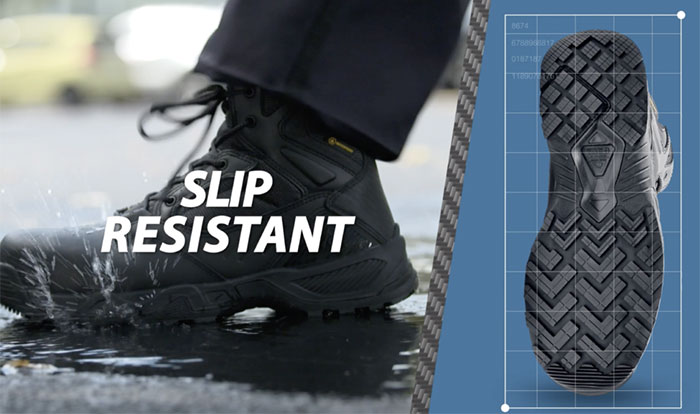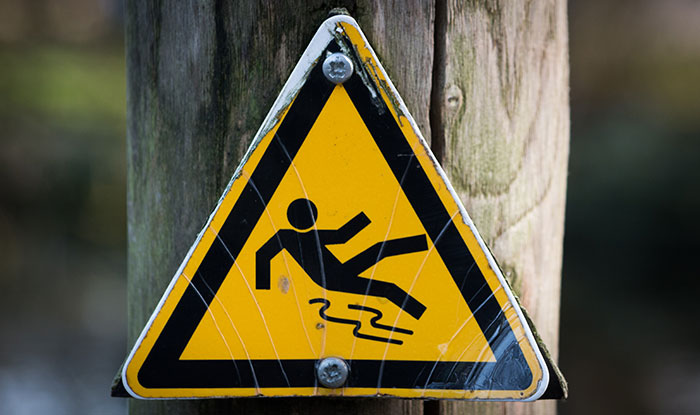4 Facts Employers Should Know About Safety Footwear
Employees in high-risk work environments, such as the construction, industrial, transportation/warehousing and food service sectors, are constantly at risk for accidents. These industries often expose workers to hazardous objects and materials, slippery surfaces and heavy machinery, presenting the opportunity for potentially fatal injuries to occur.
Fortunately, most common workplace accidents can be prevented by simply requiring workers to wear the appropriate Personal Protective Equipment (PPE). In fact, approximately 700,000 lost work days could be avoided each year with the proper use of PPE.
As an employer, being knowledgeable about the different types of protective gear your team can wear to stay safe on the job can be lifesaving. Safety footwear is one form of highly effective PPE that can be worn to reduce accidents and create a safer work environment. Not only do protective shoes defend against foot injuries from sharp objects, spilled liquids, slips and falls and more, but they also help companies more effectively achieve their safety goals.
Read ahead to discover 4 key facts about safety footwear that must be worn to better protect your team..
Safety Footwear Must Be Worn
The Bureau of Labor Statistics reports about 60,000 occupational foot injuries each year. To prevent these injuries, the Occupational Safety and Health Administration (OSHA) has established a set of safety footwear guidelines. One such guideline is that employers must “ensure that each affected employee uses protective footwear when working in areas where there is a danger of foot injuries due to falling or rolling objects, objects piercing the sole, or when the use of protective footwear will protect the affected employee from an electrical hazard….”
In addition to safety footwear being mandatory for many industries, OSHA also requires that protective footwear comply with consensus standards such as the ASTM standard testing method for foot protection. When your employees wear ASTM compliant work shoes, they’re guaranteed to have quality shoes that will allow them to safely and confidently perform their daily tasks.
Safety Footwear Prevents Workplace Accidents and Injuries
In 2019, the Bureau of Labor Statistics reported a total of 5,333 occupational workplace accidents, a 2% increase from the previous year. As the number of yearly workplace accidents rises, companies need more effective methods for accident prevention – and safety footwear is one such means proven to stop accidents.
The adoption of a safety footwear program as part of your safety plan can minimize common workplace accidents such as slips and falls. For example, the University of California – Irvine experienced a 75% reduction in slips and falls within the first full year of implementation of a slip-resistant footwear program.
Safety Footwear Can Be Trendy and Comfortable
Safety footwear trends have evolved over the years. Today, workers have access to comfortable, stylish work shoes designed specifically for their industry and work environment.
Some of the top styles of safety footwear include:
- Slip-resistant
- Safety toe
- Puncture resistant
- Spill guard
With popular styles like these being offered in comfortable, more fashionable options, it’s easier to get your employees excited about wearing protective footwear. According to a survey conducted by Kimberly-Clark Professional, 40% of respondents indicated that they didn’t wear their PPE because it was “uncomfortable”. Safety footwear is made with comfortable insoles and quality materials that will help your employees stay on their feet the entire workday.
Safety Footwear Is Affordable
Because safety footwear is a mandatory form of PPE for many industries, protective footwear becomes an additional expense for both you and your employees. By investing in a corporate safety program, your employees can take advantage of special corporate discount pricing. This discounted rate makes work shoes more affordable for your team. With cost-friendly shoes, your employees can more easily obtain the appropriate shoes. When your employees wear the correct footwear, you can further reduce costs by minimizing accidents and reducing annual workers’ compensation costs.
Employers are responsible for the well-being and safety of employees during the workday. Therefore, you must assess the workplace and ensure that each team member has the right safety equipment to safely preform daily tasks. Safety footwear is a common type of safety gear that helps companies eliminate foot injuries such as cuts, broken bones, and burns. As an employer, doing your due diligence to understand the importance of safety footwear for (and requiring your team to wear them) can significantly improve your company’s safety ratings and help you achieve your safety goals.
Download The Slippery Slope of Work-related Fall Injuries whitepaper to learn top safety tips employers need to know to mitigate employee risk in the workplace.
Employees and Your Bottom line.
Don't Forget To Share This Post!

The Key to Slip-Resistant Safety Shoes
Not all slip-resistant shoes for workers are equal. Find out how genuine slip-resistant footwear carries a high Coefficient of Friction (COF) score.

Workplace Safety 101: Preventing Slips, Trips and Falls
Preventing slips, trips, and falls is Workplace Safety 101 and of the utmost importance. SFC Safety explains how everyone can ensure a safe work environment.

How to Create an Accident Incident Rate Benchmark
How does your company stack up to the national injury incident rate averages? Learn how to calculate accident ratios to benchmark new safety guidelines.